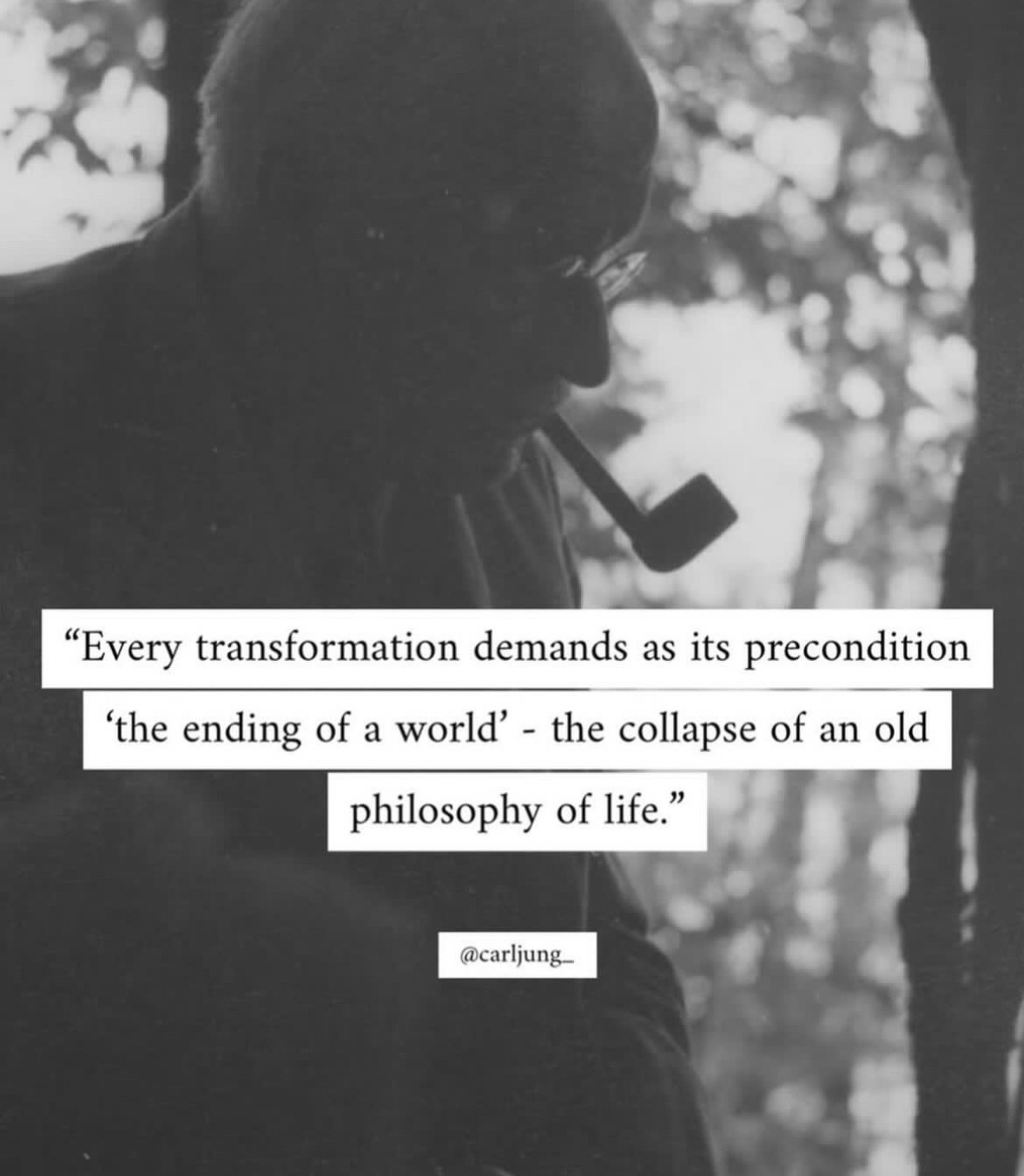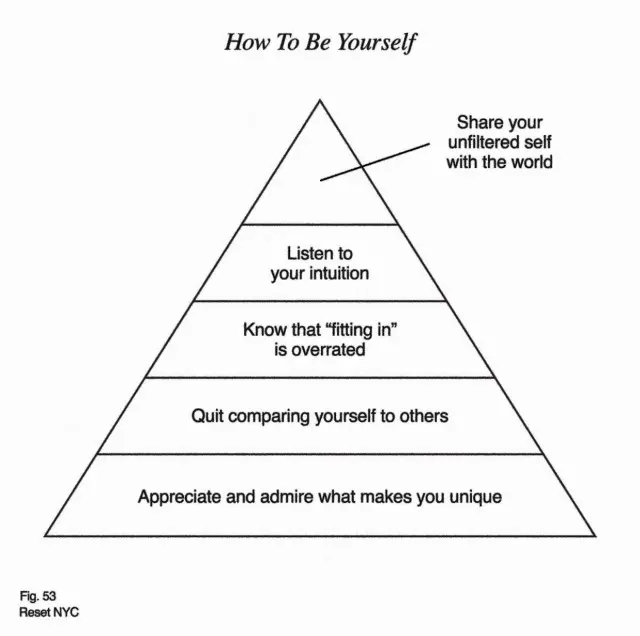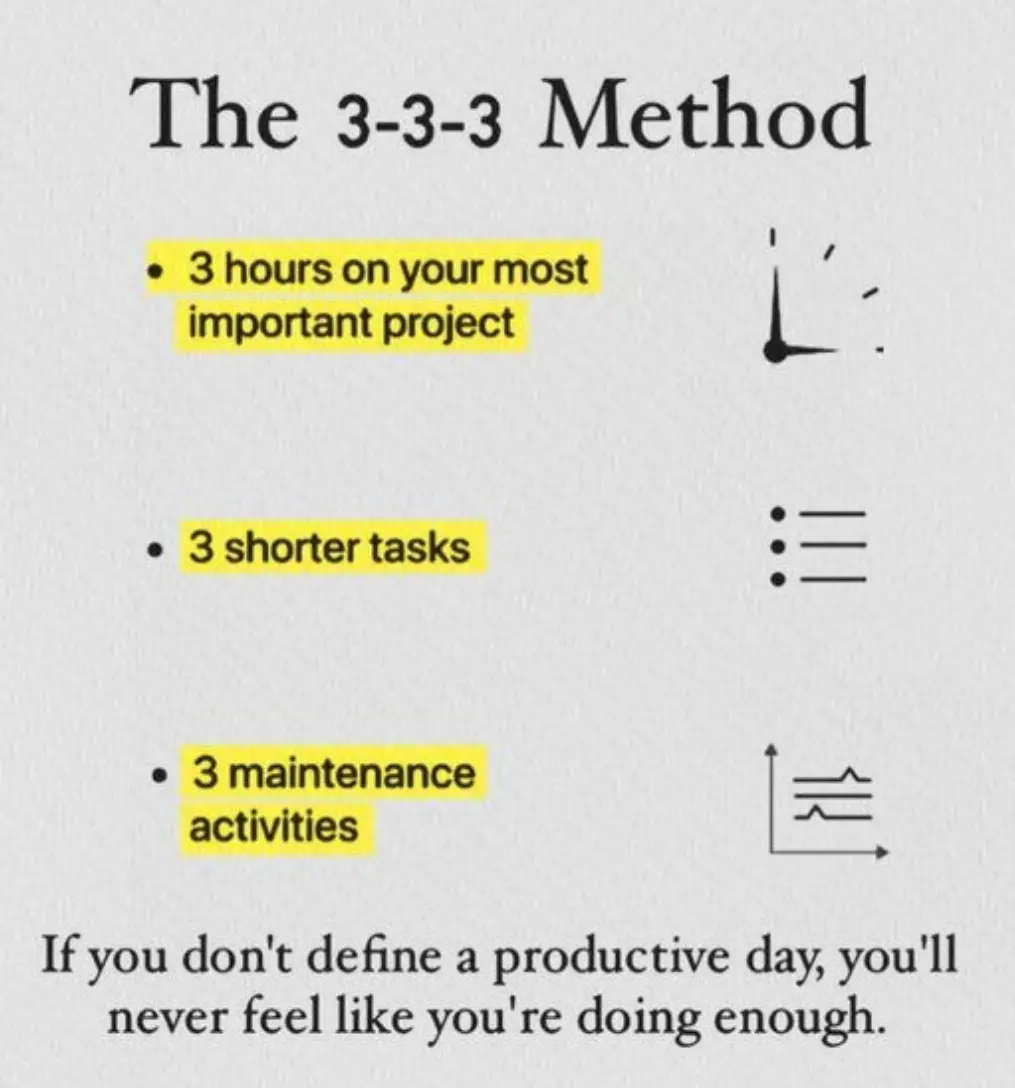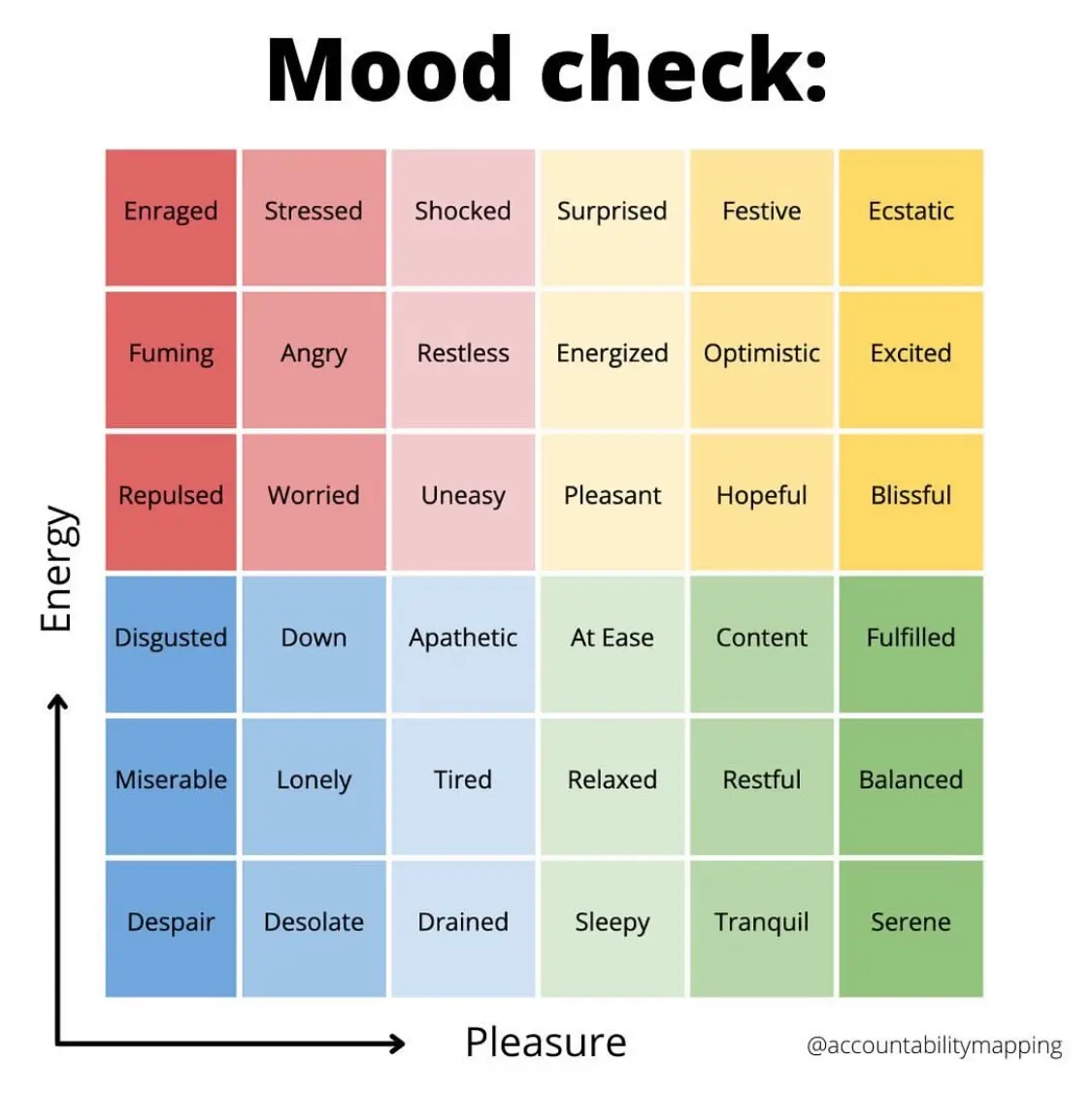Dark Forests rule everything around us

I’ve talked about dead internet theory recently, and splinternets and dark forests for years. In this post, Yancey Strickler, who coined the term ‘dark forest’ puts forward his theory that we’re now at a stage where we have to ‘perform’ in the open, on networks dominated by authoritarian powers.
Behind the scenes, however, is where the real power and control lies. And these dark forests require security to enable them to put together counter-narratives and “hidden transcripts” to provide an alternative to the dominant ideology. It’s powerful stuff, and difficult to argue against.
Dark Forests rule everything around us. Signal chats to plan wars? Check. Private group chats where rival athletes discuss injuries? Check. Communications increasingly monitored by states and authorities? Check. A decrease in posting on social media? Check again.
[…]
What was a theory of growth in the hidden corners of the internet has moved to the heart of it all in the years since. Even as humans use social media less, online spaces are increasingly being used for ideological gains, now aided by AI. There’s now more bot content than human content being posted for the first time.
[…]
The internet is dying on the outside but growing on the inside.
One way to look at this schism is through the lens of who makes the content — human or machine. Another lens is who has more power.
[…]
Public channels are where dominant powers dictate and control narratives. As authoritarian regimes around the world increase their monitoring and persecution of those who do not fall in line with the dominant story, these spaces and their security become increasingly important.
[…]
Everything public feels like an ad. Everything private feels real. The gap widens every day. The dark forest is where decisions are made; public space is where they’re performed. In an age of state dominance, only hidden spaces keep our conversations and ideals off the menu.
Source: Yancey Strickler
Image: Johannes Plenio
Hitler, apparently, really did only have one ball (but the other isn't in the Albert Hall)

You no doubt have already read that DNA tests on a sample of blood from Hitler’s underground bunker suggest that he had Kallmann syndrome. It also suggests that he had a “high predisposition for autism, ADHD, schizophrenia and bipolar disorder.”
Dispositions are not fate, of course, and there has been plenty of pushback on the association of people with these conditions as somehow more likely to be “evil.” What I do think is interesting is that if you take the findings along with the revelations within the book Blitzed: Drugs in Nazi Germany then it’s no wonder that he was so messed up.
The bloodied swatch of fabric - now 80 years old - was cut out of the sofa in Hitler’s underground bunker, where he killed himself when Allied forces descended on Berlin at the end of World War Two.
While inspecting the bunker, Colonel Roswell P Rosengren of the US army saw an opportunity to get a unique war trophy and he pocketed the fabric. It’s now framed and on display at the Gettysburg Museum of History, in the US.
The scientists are confident it really is Hitler’s blood, because they wereable to perfectly match the Y-chromosome with a DNA sample from a male relative that had been collected a decade prior.
The results, which are now under peer review, are indeed fascinating.
It is the first time Hitler’s DNA has been identified, and over the courseof four years, scientists were able to sequence it to see the genetic makeup of one of the world’s most horrific tyrants.
What is certain, experts say, is that Hitler did not have Jewish ancestry - a rumour that had been circulating since the 1920s.
Another key finding is that he had Kallmann syndrome, a genetic disorder that, among other things, can affect puberty and the development of sexual organs. In particular, it can lead to a micropenis and undescended testes - which, if you know the British war-time song, had been another rumour flying around about Hitler.
Kallmann syndrome can also affect the libido, which is particularly interesting, said historian and Potsdam University lecturer Dr Alex Kay, who is featured in the documentary.
“It tells us a lot about his private life - or more accurately, that he didn’t have a private life,” he explains.
Historians have long debated why Hitler was so completely devoted to politics, “to the almost total exclusion of any kind of private life”, and this could help to explain that.
These kinds of findings, the experts say, are what make them both fascinating and useful. As Prof King puts it: “the marrying of history and genetics”.
Source: BBC News
Image: CC BY Freenerd
It's OK just to do things for fun

Over the last couple of months I’ve largely replaced listening to news, politics, and sports podcasts with those dedicated to philosophy, adventure, and creativity. I’d recommend it.
I’ve listened to a lot of episodes of The Adventure Podcast which I’ve enjoyed greatly. This particular one features Dr Mark Hines who is both an academic and ultra endurance athlete. Like many who appear on the podcast, he’s an interesting and humble guy.
In particular, I wanted to surface something he says quite close to the end of the episode, around 1h 25m in. He talks about there being “too much focus on the idea that doing something you enjoy is somehow wrong.” What I think he means is that there’s an expectation these days that you do things to “inspire others,” raise money or for reason other than your own enjoyment.
It’s a good reminder, for me at least, that it’s OK just to do things because it’s fun — whether or not other people agree.
Episode 194 of The Adventure Podcast features exercise physiologist and endurance athlete, Dr Mark Hines. Mark is a senior lecturer in exercise physiology at Oxford Brookes University, with a background in ultra endurance racing of the gnarliest kind. If it’s long, cold, snowy and potentially deadly, then Mark has probably raced it. In this episode, Mark shares the story of how he got into endurance racing, starting from his childhood experiences of camping and cross country running, to eventually being inspired by a Ben Fogle documentary to compete in the Marathon des Sables. He discusses his academic journey in exercise physiology, emphasising how his own fitness journey and desire to understand the science behind it motivated his studies. This conversation then delves into the physical and mental challenges of endurance racing, with Mark providing detailed insights into his experiences, including the importance of proper preparation, problem-solving, and the emotional and mental impact of these extreme events.
Source & image: The Adventure Podcast
In short, capital, and capitalism, always has a tendency towards crisis by undermining the things that are necessary to sustain capitalism

Good stuff, as ever, from futurist Andrew Curry who shares an analysis from Laetitia Vitaud. The latter believes that too few people will be working in future—not because of AI, but because of:
- Insufficient childcare and support for working mothers
- Housing crisis trapping workers
- The caregiving time bomb
- Deteriorating health of workers
Curry goes through these one by one, but it’s his conclusion that I want to share here. There’s an underlying cause to all of this which is, you’ll be surprised to hear, is capitalism.
This piece is already long, so I’ll be brief, but the pattern of the last 40 years is that whole areas of care have been turned into cash machines by innovative parts of capital with the connivance of government. In short, capital, and capitalism, always has a tendency towards crisis by undermining the things that are necessary to sustain capitalism. […]
But the underlying argument here is that over a period of 50 years—and accelerating since the 2008 crisis—we have seen a process whereby increasing areas of the economy have been turned into places run according to the rules of finance capital. Initially this involved running private sector businesses according to financial rules.
As Rebecca Carson argues in her recent book Immanent Externalities, this now extendsinto all of the spaces that are essential to our reproduction as human beings. These spaces, which include housing, schools, childcare, eldercare, and health practices, have become new sources of profit. In other words, if we are going to address the issues that Laetitia Vitaud identifies, we don’t just need new institutions. We need innovation in new forms of ownership—social, public, communal, non-profit—that take these institutions back outside of financially-driven management systems.
Source: The Next Wave
Image: kate.sade
Well, the genie is out of the bottle on AI friends (and romantic partners)
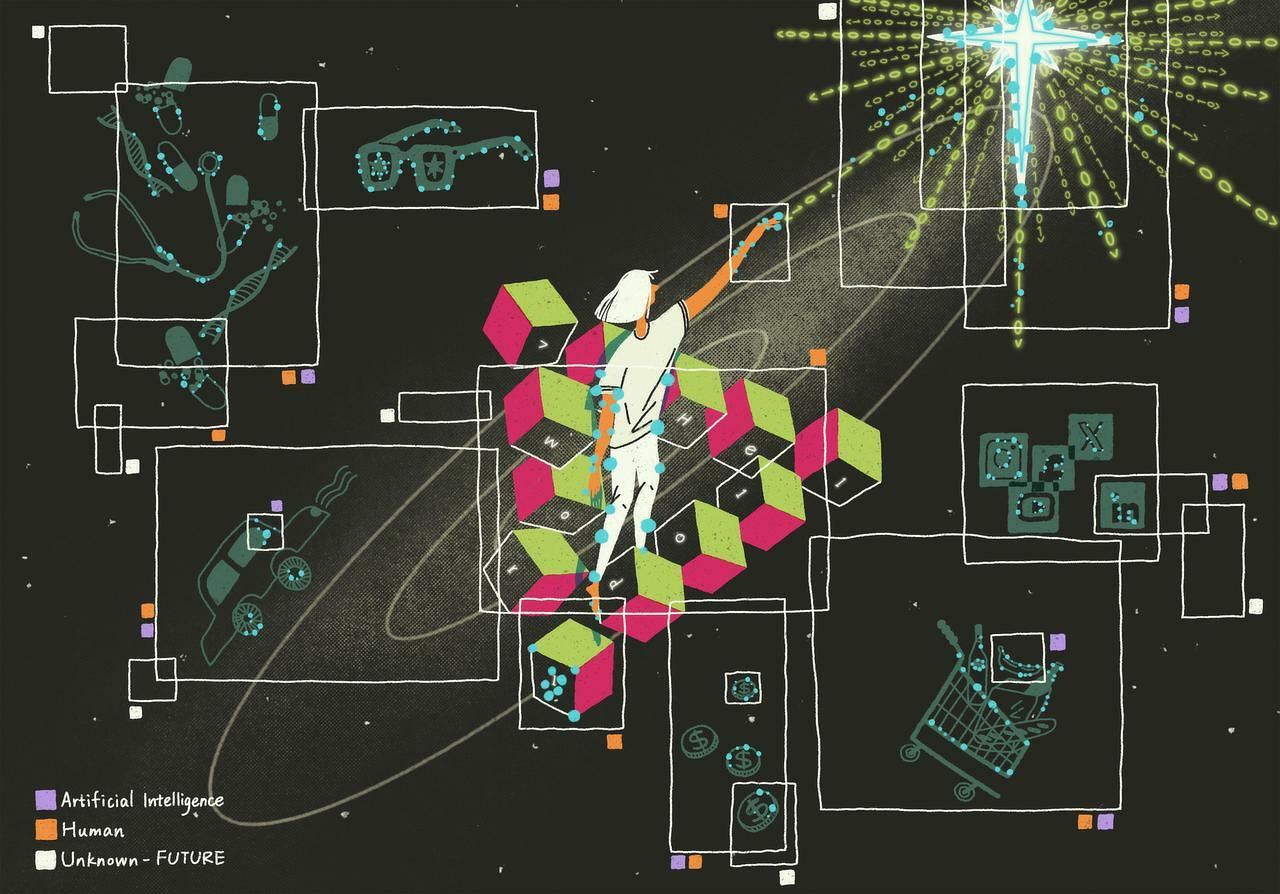
The defining ‘coming out’ awkward situation for my parents' generation was finding out that their son or daughter was gay. For my generation, I think it’s going to be that their son or daughter is dating an AI.
You can ask whether or not it’s “OK” or “healthy” to have AI friends or romantic partners. Meanwhile people actually are using LLMs for these purposes. And, as Jasmine Sun points out in this article, while there’s some upside to that, the chances are that’s outweighed by the downside.
[W]e can read as many disclaimers as we want, but our human brains cannot distinguish between a flesh-and-bones duck and an artificial representation that looks/swims/quacks the same way.
Why do people become so attached to their AIs? No archetype is immune: lonely teenagers, army generals, AI investors. Most AI benchmarks show off a model’s IQ, proving “PhD-level intelligence” or economically useful capabilities. But consumers tend to choose chatbots with the sharpest EQ instead: those which mirror their tone and can anticipate their needs. As the politically practiced know, a great deal of AI’s influence will come not through its superior logic or correctness, but through its ability to build deep and hyperpersonalized relational authority—to make people like and trust them. Soft skills matter, and AI is getting quite good at them.
[…]
Most people use AI because they like it. They find chatbots useful or entertaining or comforting or fun. This isn’t true of every dumb AI integration, of which there are plenty, but nobody is downloading ChatGPT with a gun to their head. Rather, millions open the App Store to install it because they perceive real value. We can’t navigate AI’s effects until we understand its appeal.
[…]
Well, the genie is out of the bottle on AI friends. Recently, a colleague gave a talk to a LA high school and asked how many students considered themselves emotionally attached to an AI. One-third of the room raised their hand. I initially found this anecdote somewhat unbelievable, but the reality is even more stark: per a 2025 survey from Common Sense Media, 52% of American teenagers are “regular users” of AI companions. I thought, this has to be ChatGPT for homework, but nope: tool/search use cases are explicitly excluded. And the younger the kids, the more they trust their AIs. So while New Yorkers wage graffiti warfare against friend.com billboards, I fear the generational battle is already lost.
[…]
I’m generally enthusiastic about AI service provision. AI assistants can act as tutors, business advisers, and even therapists at far cheaper rates than their human equivalents. I think Patrick McKenzie makes a fair point when he notes the tradeoff between stricter liability and higher costs. When it comes to mental health impacts, it’s not crazy to counterweight “How many lives have LLMs taken?” with “How many lives have LLMs saved?”
But as much as I try to be open-minded, each testimony I read only stresses me out more. It’s clear that the level of emotional entanglement far surpasses any ordinary service. An algorithm change should not feel like a bereavement. Users analogize the shock of model updates to their abusive parents; words like “trauma,” “grief,” and “betrayal” appear again and again. LLMs offer a bizarro form of psychological transference: people are projecting their deepest emotional needs and fantasies onto a machine programmed to feign care and never resist.
Source: Jasmine Sun
Is Europe's climate going to become like North America's?

The map above plots European cities of the same latitude onto a map of North America. If you look closely, you’ll notice something interesting: either European cities should be much colder, or North American cities should be much warmer.
The reason for this is the Atlantic Meridional Overturning Circulation (AMOC), part of which we know as the ‘Gulf Stream’. As this carries warm water north, it eventually reaches polar regions where the water cools, becomes denser, and sinks—driving the return flow that completes the AMOC circulation.
The problem is that the AMOC is becoming weaker and, if it collapses entirely, would have catastrophic consequences for the UK, Europe, and beyond.
A potential collapse of AMOC could trigger a modern-day ice age, with winter temperatures across Northern Europe plummeting to new cold extremes, bringing far more snow and ice. The AMOC has collapsed in the past - notably before the last Ice Age that ended about 12,000 years ago.
“It is a direct threat to our national resilience and security,” Iceland Climate Minister Johann Pall Johannsson said by email. “(This) is the first time a specific climate-related phenomenon has been formally brought before the National Security Council as a potential existential threat.”
Elevation of the issue means Iceland’s ministries will be on alert and coordinating a response, Johannsson said. The government is assessing what further research and policies are needed, with work underway on a disaster preparedness policy.
Risks being evaluated span a range of areas, from energy and food security to infrastructure and international transportation.
An Atlantic current collapse could have consequences far beyond Northern Europe. It could potentially destabilize longtime rainfall patterns relied upon by subsistence farmers across Africa, India and South America, according to scientists.
[…]
Britain said it was following scientific reports that suggested an abrupt collapse was unlikely during this century, while directing more than 81 million pounds into research to understand when the Earth’s climate systems might be pushed to a point of no return.
“The science is evolving quite rapidly and time is running out to do anything about it because the tipping point may well be quite close,” said oceanographer and climatologist Stefan Rahmstorf from Germany’s Potsdam Institute for Climate Impact Research.
Iceland is not taking any chances, as the pace of warming speeds up and greenhouse gas emissions continue to rise.
“Sea ice could affect marine transport; extreme weather could severely affect our capabilities to maintain any agriculture and fisheries, which are central to our economy and food systems,” Johannsson said.
“We cannot afford to wait for definitive, long-term research before acting.”
Source: Reuters
Image: Vivid Maps
Bonfire: welcome to the open social web
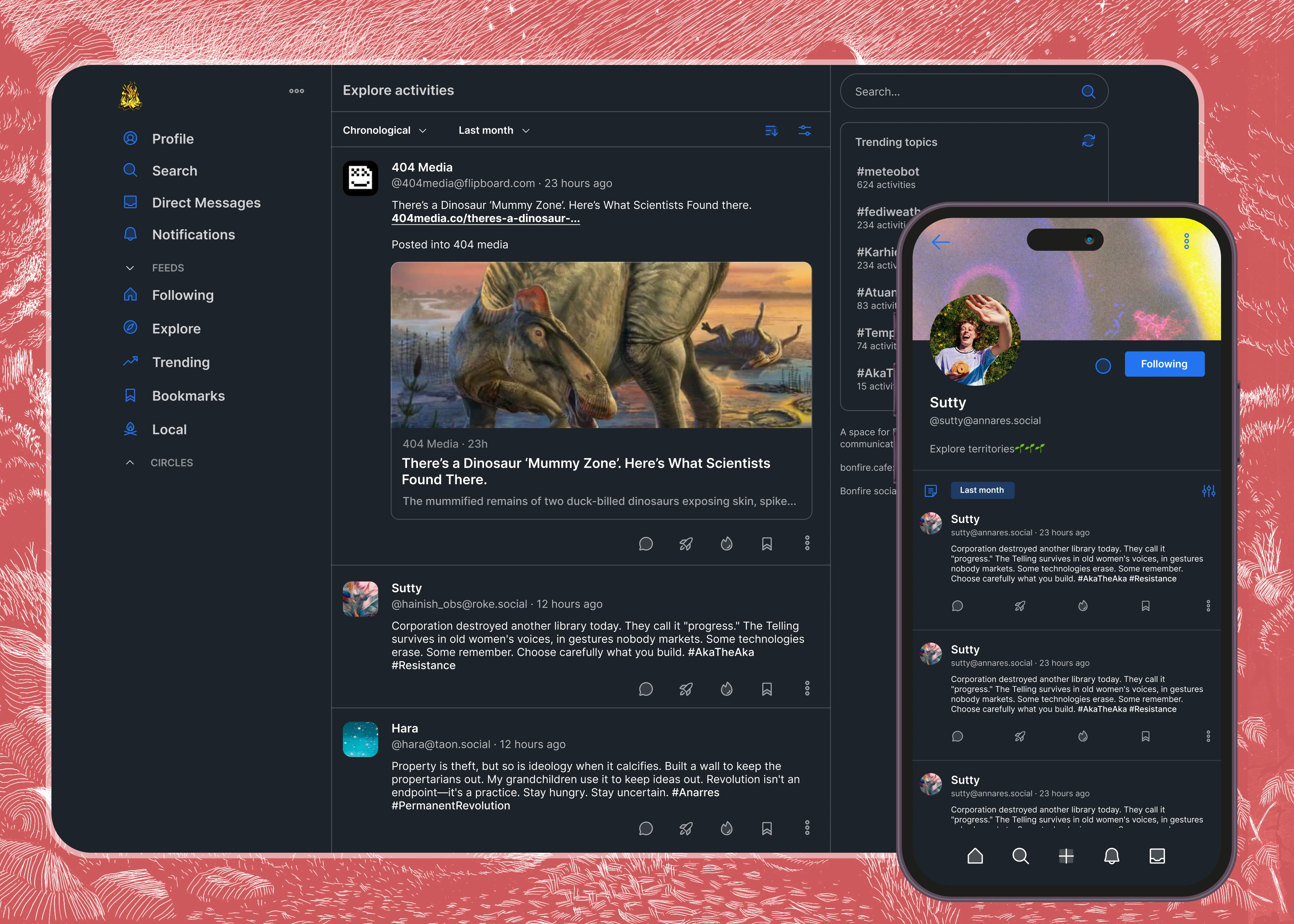
My friends and former colleagues Ivan and Mayel are crowdfunding now they along with other contributors have reached v1.0 of Bonfire, which they describe as “open, community-first social infrastructure.”
It’s well worth watching the fantastic video they’ve produced for the crowdfunder, as well as read this post by Erin Kissane which waxes lyrical about the approach they’re taking.
You could just look at this as just another federated social network client, but it’s much more than that. They’ve put so much thought, time, and energy into Bonfire — and it shows.
Welcome to the open social web: a growing constellation of people and interconnected apps reclaiming the web.
But most people aren’t here yet. They’re trapped in mainstream social media platforms controlled by billionaires, where feeds are manipulated, people are silenced, our data is sold, ads are everywhere, and platforms mutate or vanish overnight.
The solution isn’t another winner‑takes‑all platform, but a resilient, diverse web of interoperable services built on open protocols like ActivityPub, with bridges to other networks (AT Protocol/Bluesky) where useful. Today the fediverse spans ~18 million accounts across ~25,000 servers, and Bluesky boasts ~40 million sign‑ups. But we’re not betting on size, we’re inviting you to make one last migration from closed platforms to open, interoperable networks. Towards a world where your profiles, relationships, and data move with you. Where you can choose services based on features, safety, and care instead of being trapped by network effects. Where governance lives with communities, not a corporate owner.
We’re building Bonfire on different values, stoking our fire as the old model enshitifies, burns out, and makes room for the new. We focus on communities shaping our own spaces, with tools co‑designed and governed together, so online spaces can be made, moderated, and evolved with care.
After several years of tireless work, we’ve just launched Bonfire Social 1.0, built on our modular toolkit that’s fully customisable and extensible by design, which powers federated spaces that connect with Mastodon and the wider fediverse, balancing local autonomy with global conversation.
Source & image: Indiegogo
Execution, timing, people, resources, persistence… maybe even luck.

One of the reasons that it’s difficult to work with people who have different worldviews and assumptions is that you end up talking past one another. I’ve had a situation like this over the past few days, mainly around the ‘ownership’ of ideas.
For what it’s worth, my stance is similar to Tom Watson’s, who would have been working with me on a project had a strange confluence of events around ‘IP’ mean that there was no way forward. Ideas are easy; it’s the execution that counts.
If you’ve spent any time in the start-up world, you’ll know there are very few truly original ideas. It’s rarely just about the concept itself, it’s about who does something with it. Execution, timing, people, resources, persistence… maybe even luck.
“You can have brilliant ideas, but if you can’t get them across, your ideas won’t get you anywhere.” – Lee Iacocca
Ideas are born from imagination, but also from experience and history - from everything and everyone that has come before. So who can ever truly own one?
Source: LinkedIn
Image: Kaleidico
The so-called 'post-naive' internet era

On a Mozilla blog, three researchers from a Berlin research and strategy studio argue that we’re moving beyond the ‘naive’ internet in its place are a series of ‘miniverses’. They’re essentially arguing that the open web is dead. While I don’t have a problem with specific parts of this post, I don’t agree with the overall argument.
No, the open web is the default and something that makes the other things possible. Yes, we might be getting more sophisticated in our use of networks for various purposes, but the open web remains the connective tissue.
I guess I have issues with the pejorative use of the term ‘naive’ here when what they’re actually pushing back against is the default Big Tech platforms. Like a few things I saw at MozFest this weekend, Mozilla should know better.
We’ve identified four layers on which these miniverses are built differently than in previous eras:
On a structural level, as with Subvert being collectively owned by its members rather than by venture capitalists.
On a value level, such as release platform Metalabel, which is built for creators to collaborate and split earnings, rather than competing against each other.
On a design level, such as newsletter-turned-social-network Perfectly Imperfect, which designs its feed around human-created recommendations rather than algorithm-optimized content.
On a community level, for instance Berlin-based online community and physical hub Trust, which experiments with decentralized governance structures to evolve along its community’s IRL needs.
Source & image: Mozilla NP. blog
More reasons to get off US Big Tech

Heather Burns is a self-described “tech policy wonk” who thinks that not only should we be getting all of our data off Google and Apple’s servers, but off those of all US Big Tech companies.
In this post, Burns is primarily talking about Apple Data Protection soon no longer being available in the UK due to government pressure. Those Brexit benefits just keep on going; there’s no way this would have happened if we were still part of the EU.
I use a Mac Studio as my main machine, but my laptop and smartphone run Fedora Silverblue (Linux) and GrapheneOS (Android), respectively. I do have an iCloud account but I don’t back anything up to it, using Time Machine on my local network instead.
[A]t some point in the very near future Apple is withdrawing its Advanced Data Protection (ADP) feature from the UK altogether as a result of the… Investigatory Powers Act.
Users… will be required to manually switch it off or lose their iCloud account.
[…]
I’m not going to tell you where to move your stuff other than to say that if you’re moving it from one big tech company to another, you’re just being daft. Likewise, if you’re moving your stuff to a non-e2ee service, don’t bother. If you need an e2ee service try Proton. They have a Black Friday sale on.
[…]
You know as well as I do that you need to be moving everything you can out of the American stack anyway so just stick this task on your to-do list, which should not be Reminders, and get it done.
Source: Hi, I’m Heather Burns
Image: Glen Alejandro
Low-carbon website showcase
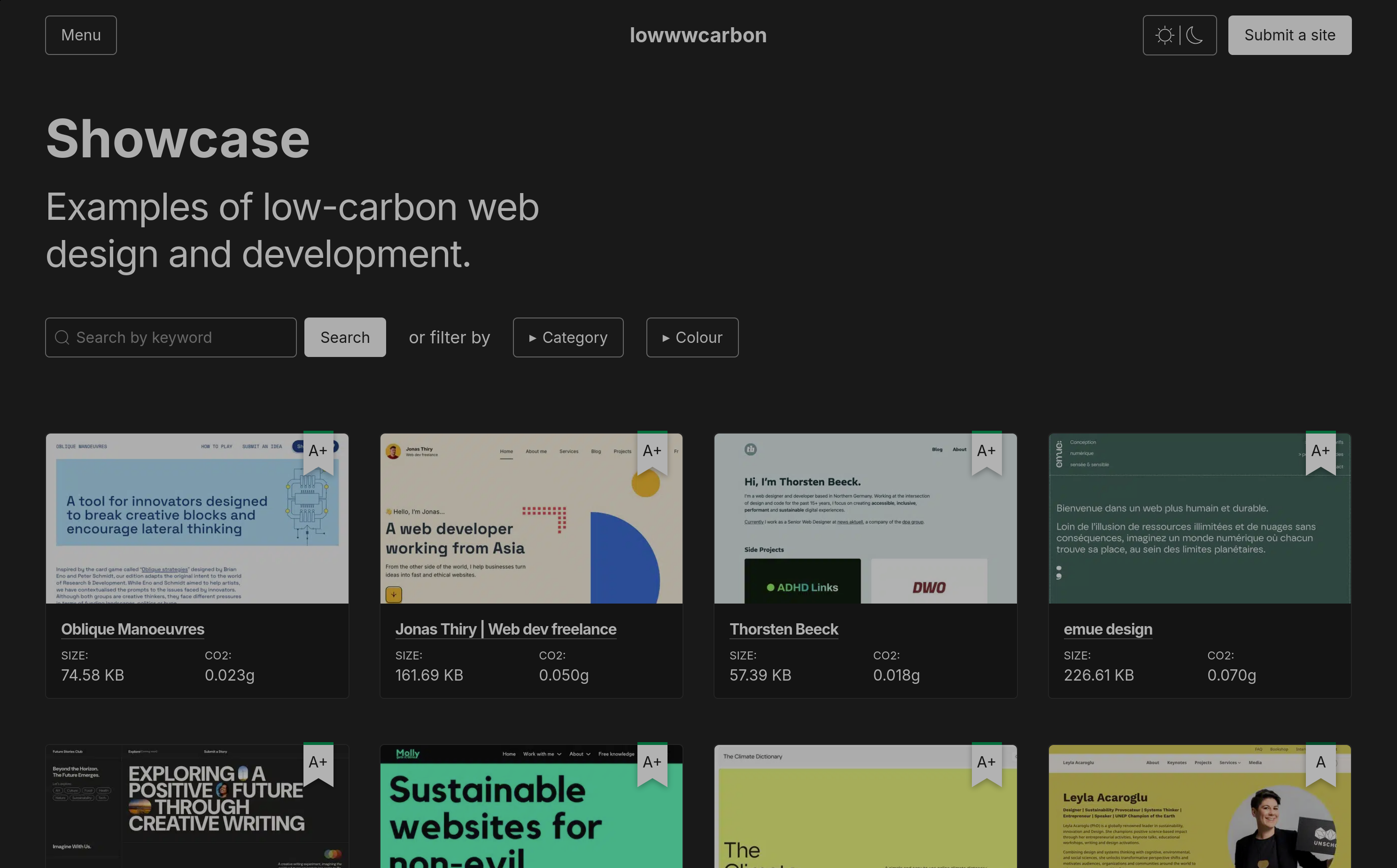
I went to a session on sustainability at the Mozilla Festival today. Entitled Designers, Developers, and Dollars it was presented by three people who represented the business side of sustainability, the design side, and the developer side, respectively.
As part of it, they shared some examples of inspiration and good practice—including this showcase. In the Q&A afterwards, I mentioned 512kb.club as well as my dougbelshaw.com site which I’m soon to update to this alternative version
Source: lowwwcarbon
Life is not a series of well-designed problems

Good stuff, as ever, from Adam Mastroianni who tackles the ‘problem’ of the lack of correlation between IQ and self-reported happiness. The issue, as he points out, is that intelligence tests tend to focus on well-defined problems, whereas life tends to throw at us poorly-defined problems.
There is, unfortunately no good word for “skill at solving poorly defined problems.” Insight, creativity, agency, self-knowledge—they’re all part of it, but not all of it. Wisdom comes the closest, but it suggests a certain fustiness and grandeur, and poorly defined problems aren’t just dramatic questions like “how do you live a good life”; they’re also everyday questions like “how do you host a good party” and “how do you figure out what to do today.”
One way to spot people who are good at solving poorly defined problems is to look for people who feel good about their lives; “how do I live a life I like” is a humdinger of a poorly defined problem. The rules aren’t stable: what makes you happy may make me miserable. The boundaries aren’t clear: literally anything I do could make me more happy or less happy. The problems are not repeatable: what made me happy when I was 21 may not make me happy when I’m 31. Nobody else can be completely sure whether I’m happy or not, and sometimes I’m not even sure. In fact, some people might claim that I’m not really happy, no matter what I say, unless I accept Jesus into my heart or reach nirvana or fall in love—if I think I’m happy before all that, I’m simply mistaken about what happiness is!
This is why the people who score well on intelligence tests and win lots of chess games are no happier than the people who flunk the tests and lose at chess: well-defined and poorly defined problems require completely different problem-solving skills. Life ain’t chess! Nobody agrees on the rules, the pieces do whatever they want, and the board covers the whole globe, as well as the inside of your head and possibly several metaphysical planes as well.
Source: Seeds of Science
Image: Dmitry Ratushny
Rewilding the Open Web
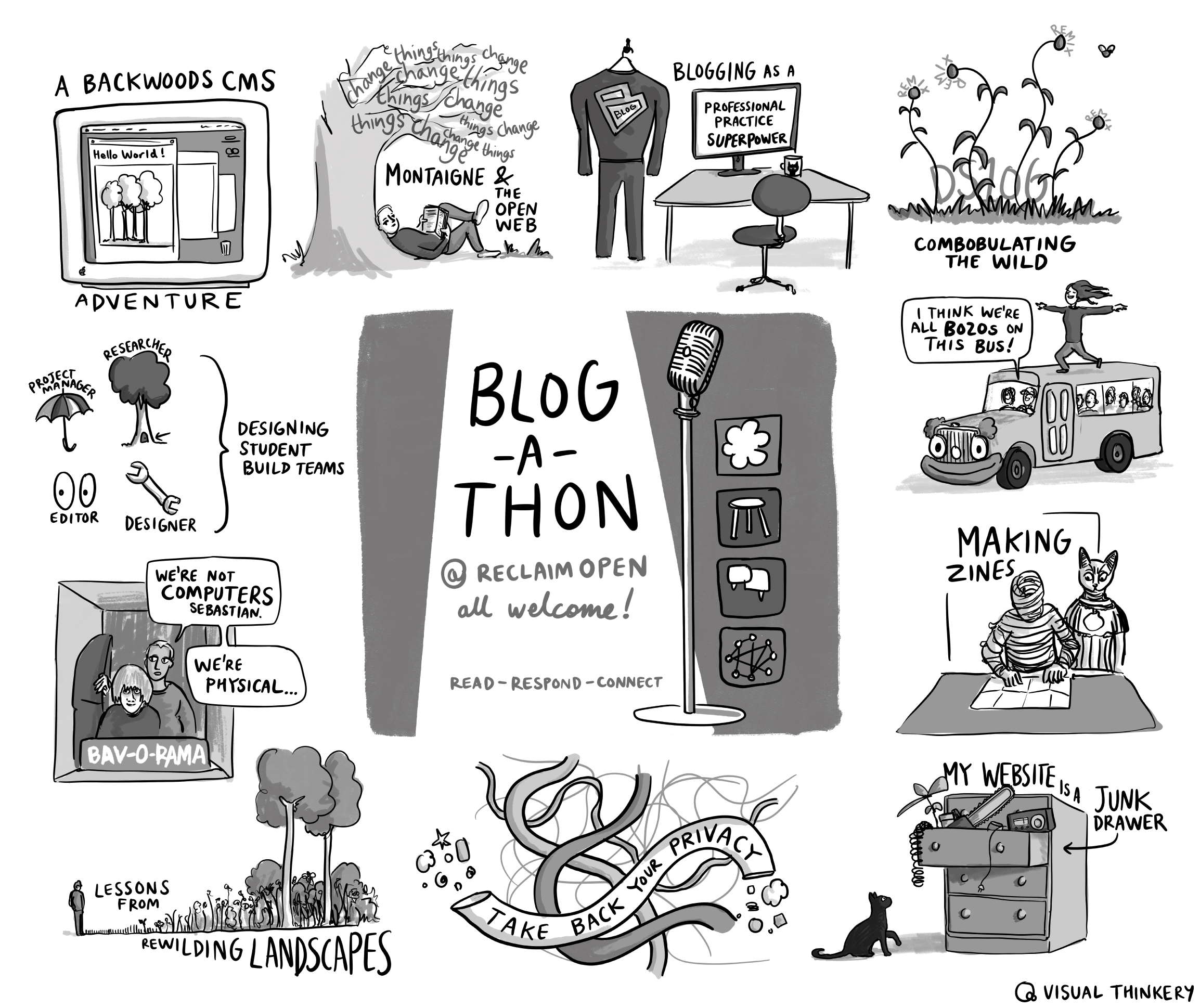
Back in late August, I drafted a post entitled Things change (or, Montaigne and the Open Web) for the Reclaim Open online conference. The event took place this week, mostly while I was travelling to and in Barcelona.
My good friend Bryan Mathers took it upon himself to draw an image for all of the blog-a-thon submissions, including mine, and then put together this blog post as a way of making sense of the submissions.
I hadn’t quite appreciated the format until it started to unfold before my eyes – but essentially, a blog post was syndicated via the conference site every hour, with a chat available for people to comment alongside the post. This was interesting for a number of reasons. As it was an online conference, people were in all the timezones. This meant that I could come back the following morning and have a look at the posts that I missed. I could take my time, skim over some, re-read others, jump down a rabbit hole… This felt like the web that was when speeds were slow and we weren’t in the rush to make or consume content like we are today.
The blogs were all on a loose theme of rewilding the open web and I’d already created artwork for the conference having absorbed some dialogue from the organising team. I tried to capture a landscape of the blogs as they appeared, attempting to take each title, and from the blog post get a steer on what I should draw.
Source & image: Visual Thinkery
Words that don't translate

This is an interesting website from Steph Smith for “words that don’t translate.” Most of us will be aware of the German word schadenfreude which means “pleasure derived from the misfortune of others” but there are many other words that are pretty unique to one language.
I’m in Barcelona at the moment for a Mozilla alumni network event and MozFest so I’ll share some Catalan examples below.
Bixomets — Shame on behalf of others Capicua — A number that doesn’t vary if the numbers are inverted. Also it can be called a palindrome, but the word capicua refers especially to the numbers
Celístia — Brighness from the stars
Rauxa — Sudden determination or action; rapture
Seny — Common sense, is a form of ancestral Catalan wisdom or sensibleness. It involves well-pondered perception of situations, level-headedness, awareness, integrity, and right action
Source: Eunoia
Image: Towfiqu barbhuiya
Ambiverts, travel, and 'hermit mode'

I can’t remember how I stumbled across Ahmet Sabanci but he’s an interesting guy. A critical futurist, writer and researcher based in Turkey, before I get into the thing of his that I want to discuss in this post, I want to draw attention to his:
- Now page — I like the way he’s reframed this as a ‘status board’ to include all kinds of things that he’s up to
- RSS reader — A list of the news sources that he keeps up to date with
- Weekstarter — Instead of the retrospective weeknotes that I and others do, he talks about what he’s going to be doing 🤔
Anyway, in his most recent Weekstarter post, Sabanci talks about striking a balance between travel and what he calls ‘hermit mode’. I think he captures what, for me, would be the perfect way for operating for ambiverts. There was a time about a decade ago when this was true for me and I’d like to get back to it.
I love traveling and always get excited before a travel — especially if I’m going to a new place. Experiencing somewhere for the first time, observing and simply being in a place I’ve never been before gives me a unique kind of joy. Part of it is probably comes from the fact that I’ve spent my first 18 years in a single city and always been curious about the other places.
[…]
That’s probably why I ended up pursuing a career like this because most of the other jobs forces you to always stay in one place and one normal. I can’t even think myself in a life like that.
But one thing I’m glad I learned early in my life is that I also need a calmer place to call my home to retreat, activate the hermit mode and spend time with the things I’ve seen, learned, and experienced. When you’re constantly on the first mode, overload is inevitable. And when you don’t have a space to go hermit mode, this overload can turn into something impossible to manage.
Most people are surprised when I say that moving outside İstanbul was one of the best decisions we made, but this is exactly why I think that. İstanbul is a great city and I love it but it doesn’t really allow you to go hermit mode when you need. Living in İstanbul means that you can’t really manage your mental load because the city constantly creates new ones. Sure, I might miss couple of events or certain social gatherings here and there but not living there means that instead of feeling a pressure to be everywhere, I’m able to choose what I want to miss.
[…]
Knowing that your home is a calm place you can put a distance between yourself and everything else, go into hermit mode whenever you need makes travel so much comfortable. Knowing that you’re going to return a home like that is a luxury and if you’re in a career or a life similar to what I described, I highly recommend working towards this goal. It makes a real difference.
Source: Weird and Deadly Interesting
Image: Oussama
It's worth considering the glass to be half-full

My grandmother (who featured in my TEDx talk) lived until 93 and, although she had the occasional gripe, she was an extremely positive person. It turns out that the level of optimism she displayed about the future might have had a role to play in her longevity.
I confess not to having read more than the summary and abstract of this study, but it’s from a reputable journal and is six years old at this point. So it would have been retracted if there were issues. I discovered it via Hacker News where random stuff from previous years often surfaces, along with up-to-date stuff!
Optimism is a psychological attribute characterized as the general expectation that good things will happen, or the belief that the future will be favorable because one can control important outcomes. Previous studies reported that more optimistic individuals are less likely to suffer from chronic diseases and die prematurely. Our results further suggest that optimism is specifically related to 11 to 15% longer life span, on average, and to greater odds of achieving “exceptional longevity,” that is, living to the age of 85 or beyond. These relations were independent of socioeconomic status, health conditions, depression, social integration, and health behaviors (e.g., smoking, diet, and alcohol use).
[…]
In both sexes, we found a dose-dependent association of higher optimism levels at baseline with increased longevity (P trend < 0.01). For example, adjusting for demographics and health conditions, women in the highest versus lowest optimism quartile had 14.9% (95% confidence interval, 11.9 to 18.0) longer life span. Findings were similar in men. Participants with highest versus lowest optimism levels had 1.5 (women) and 1.7 (men) greater odds of surviving to age 85; these relationships were maintained after adjusting for health behaviors. Given work indicating optimism is modifiable, these findings suggest optimism may provide a valuable target to test for strategies to promote longevity.
Source: PNAS
Image: manu schwendener
Monocultures are perilous not just in agriculture, but in software distribution as well.

Most people get their Android apps from the Google Play Store. It’s not the only way of doing so, however, and there are some apps I get from F-Droid, a free and open source app repository. There are a number of advantages, not least that it lists the ‘antifeatures’ of apps — which usually include things like tracking.
Recently, Google announced that Android developers will, for ‘security reasons’, be required to register with Google, which includes payment of a fee and uploading personally identifying documents. For an organisation that vaunted the ‘open’ nature of the Android ecosystem this seems like a worrying step.
This post outlines what’s at stake. First of all you own your smartphone which means you should be able to install any apps you want on it. To argue otherwise is to argue from a paternalist and potentially dictatorial point of view. You can talk about ‘privacy’ and ‘safety’ all you like, but we should always have the freedom to do what we like with our own stuff unless in doing so we’re harming other people.
For more on this see a history of how we got from ‘running anything you want on your own machine’ to the current crop of walled gardens in this post on Hackaday.
You, the consumer, purchased your Android device believing in Google’s promise that it was an open computing platform and that you could run whatever software you choose on it. Instead, starting next year, they will be non-consensually pushing an update to your operating system that irrevocably blocks this right and leaves you at the mercy of their judgement over what software you are permitted to trust.
You, the creator, can no longer develop an app and share it directly with your friends, family, and community without first seeking Google’s approval. The promise of Android — and a marketing advantage it has used to distinguish itself against the iPhone — has always been that it is “open”. But Google clearly feels that they have enough of a lock on the Android ecosystem, along with sufficient regulatory capture, that they can now jettison this principle with prejudice and impunity.
You, the state, are ceding the rights of your citizens and your own digital sovereignty to a company with a track record of complying with the extrajudicial demands of authoritarian regimes to remove perfectly legal apps that they happen to dislike. The software that is critical to the running of your businesses and governments will be at the mercy of the opaque whims of a distant and unaccountable corporation. Monocultures are perilous not just in agriculture, but in software distribution as well.
Source: F-Droid blog
Image: Andrey Matveev

